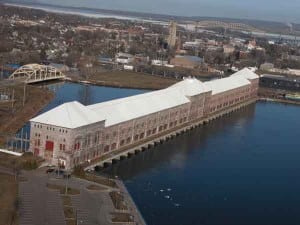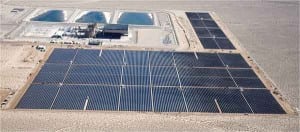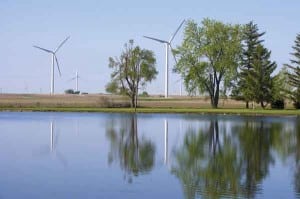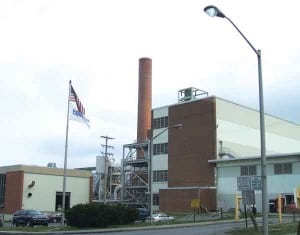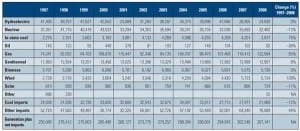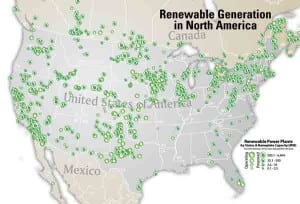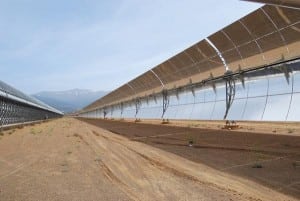Latest
-
O&M
Rebuilding Feedwater Heaters While a Plant Is Online
Rebuilding aged feedwater heaters can make better economic sense than buying new ones, because rebuilding reduces capital cost and plant outage expenses. At one Texas generating station, rebuilding saved one-third the cost of a new feedwater heater while improving the plant’s heat rate.
-
Legal & Regulatory
A Flood of Climate Change Tort Cases
On October 16, the Fifth Circuit Court of Appeals revived a lawsuit filed by residents along the Mississippi Gulf coast against several corporations in the energy, fossil fuels, and chemicals industries alleging that the defendants were responsible for property damage caused by Hurricane Katrina — Comer v. Murphy Oil USA, et al., No. 07-60756 (5th Cir. Oct. 16, 2009).
-
Hydro
Top Plants: Edison Sault Hydroelectric Plant Sault Ste. Marie, Michigan
Located on the border with Canada and operational since 1902, the Edison Sault Hydroelectric Plant is one of the oldest continuously operating power plants in North America. This pioneer plant continues to generate between 25 to 30 MW when operating at full capacity. Modern wind and solar projects have captured the public’s interest, but this century-old hydroelectric project shows that time is the ultimate arbiter of a technology’s value to society.
-
Solar
Top Plants: El Dorado Energy’s Solar Facility, Boulder City, Nevada
Sempra Generation has conjured up a market plan for producing merchant photovoltaic (PV) power that is inspired. Working with First Solar, Sempra has developed a finely tuned and standardized 1-MW PV power block that can be replicated as needed. Sempra built the modular PV plant on land adjacent to an existing gas-fired plant to shorten the development period, piggyback the power directly to the grid, and enable existing staff to manage the combined plants’ operation.
-
Wind
Top Plants: Fowler Ridge Wind Farm, Benton County, Indiana
The tractors and combines on Indiana’s farms are getting some competition from a new harvesting technology — powerful turbines that harvest wind. This March the Fowler Ridge Wind Farm opened its first phase, which consists of 222 wind turbines with a total capacity of 400 MW. Phase II is currently under construction and will use 133 wind turbines with a total capacity of 200 MW. A future, third phase will add another 150 MW and give the completed facility a total capacity of 750 MW, which will make it one of the largest wind farms in the world.
-
Waste to Energy
Top Plants: Harrisburg Resource Recovery Facility, Harrisburg, Pennsylvania
After decades of struggling with serious air contamination issues and large financial losses, this Pennsylvania waste-to-energy facility, which was built in 1972, was in need of an extreme makeover. In the wake of an unsuccessful $84 million retrofit attempt in 2005, the faltering facility’s last hope lay with a Covanta project team that took over its operation in 2007. After almost two years of hard work, the facility is now producing up to 17 MW while achieving its environmental compliance goals and earning substantial revenues.
-
Wind
Top Plants: Hywind Floating Wind Turbine, North Sea, Norway
In June, the 2.3-MW Hywind facility, the world’s first large-scale floating wind turbine, was towed to a North Sea location with a water depth of about 220 meters (722 feet) and began operation. Over the next two years this turbine will be subjected to strong wind and waves in a harsh ocean environment in an effort to thoroughly test the innovative technology.
-
Waste to Energy
Top Plants: Rio Bravo Rocklin Power Station, Lincoln, California
By 2008, the 19-year-old wood-fired Rio Bravo Rocklin Power Station’s operating performance had been significantly degraded by boiler erosion and corrosion caused by (among many other problems) poor fuel. After much consideration, the plant owners elected to invest in a comprehensive upgrade to restore the plant to its as-built performance. Today, the plant operates very reliably. A newly implemented predictive maintenance program should continue to drive down operating costs and further reduce the number of forced outages.
-
-
Solar
The Power of Light: U.S. Solar Energy Trends
For decades, the solar energy industry has struggled to become cost-competitive with other sources of power generation. Recent technology innovations and creative ways of installing solar generation are beginning to enable solar power to increase its share of the electricity market.

